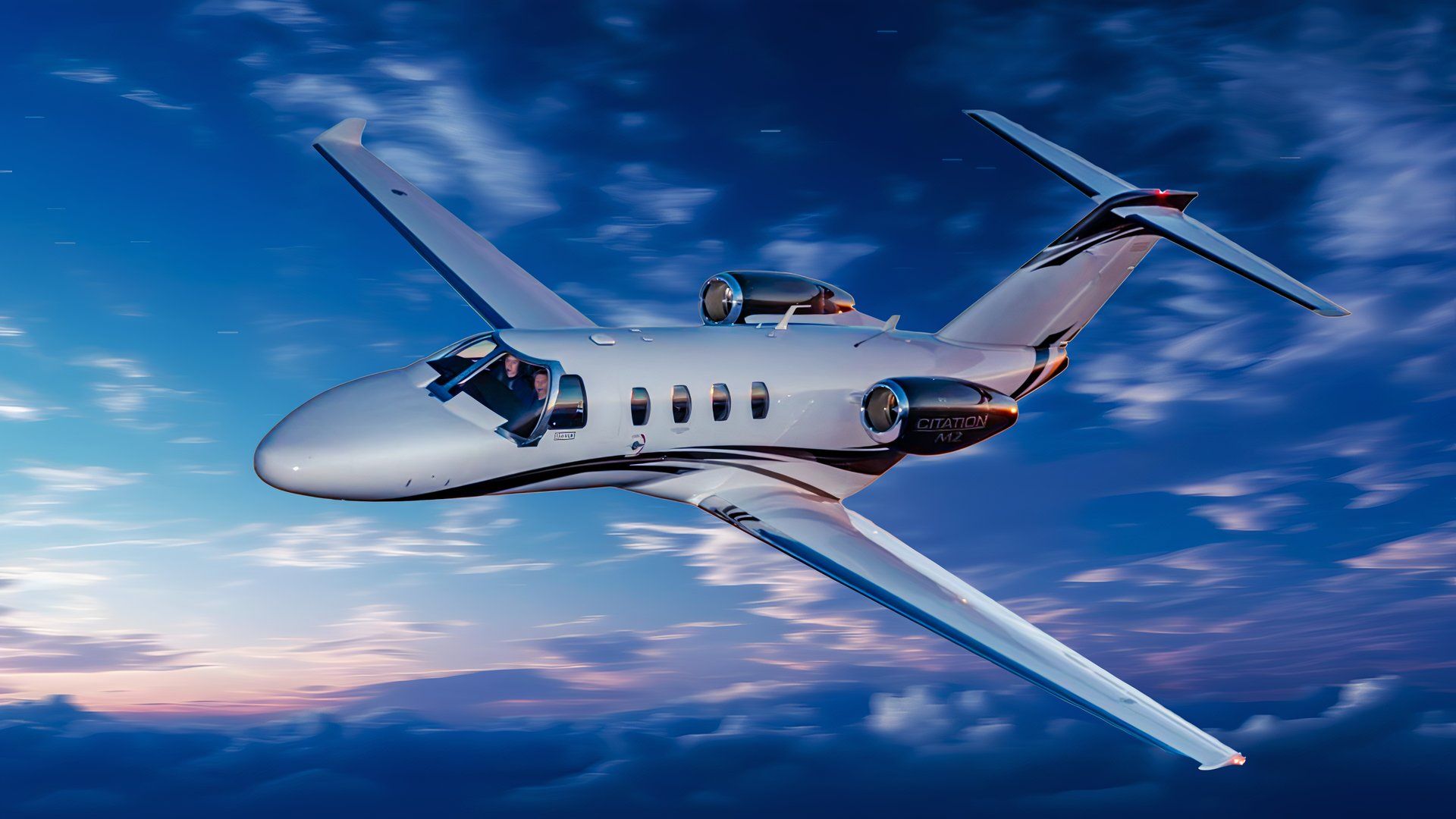Cessna is one of the world’s most well-known airplane manufacturers. Founded in the 1920s, the company is known for producing a wide range of single-engine piston aircraft. Since then, it has produced many high-wing aircraft, like the famous Cessna 172. The company has also evolved to produce several turboprop aircraft, like the Cessna Caravan and the newly certified Cessna SkyCourier.

Related
5 Unique Features On The Cessna Citation M2
The Citation M2 is also known as the Citation CJ1.
However, Cessna is also known for producing one of the most successful business jet lines of all time: the Cessna Citation. This family of aircraft began in the 1979s with the Citation I. However, the Citation family has since grown to over 15 different variants. This includes the smallest variant, the Citation Mustang, and the largest, currently produced variant, the Citation Longitude.
One of the most successful aircraft sets was the CitationJet set of variants, with over 2,000 total aircraft produced. This includes the original CitationJet through the largest variant, the CJ4. The smallest, currently-produced CitationJet is known as the Citation M2. The M2 was originally developed from the first CitationJet. Let’s take a closer look at how fast this light business jet can travel. Let’s also take a look at how this jet came to be and what makes it so special.
Brief history
As previously mentioned, the Citation M2 was an upgraded variant of the original CitationJet. Originally, the CitationJet was developed after the Citation I was discontinued in 1985. Cessna wanted to continue competing in the light business jet market but wanted to make significant upgrades, such as lowering operating costs and improving flying quality.
Photo: Kevin Hackert | Shutterstock
The original CitationJet was introduced at the annual National Business Aviation Administration (NBAA) convention in October 1989 and immediately received a positive response. It flew for the first time in April 1991, and the Federal Aviation Administration (FAA) awarded its type certificate in October 1992. Deliveries of the aircraft began in early 1993. A total of 359 original CitationJets were produced.
Cessna eventually upgraded the aircraft, which lasted from serial numbers 360 through 599, and called it the CJ1. This included an upgraded avionics system. Units 600 through 799 are registered as the CJ1+, which had an upgraded avionics system and introduced a full-authority digital engine control (FADEC) system.
The CJ1+ eventually ended production in 2011 due to its overlap with the slightly smaller Citation Mustang. However, Cessna eventually decided to bring back an upgraded version of the CJ1+, this time marketing it as a brand-new aircraft. Cessna brought the upgraded Citation M2 to market in 2013.
This was a significant upgrade to the business jet. The new M2 included improved engines, a new cabin layout, and a new avionics system. The Citation M2 would take over as Cessna’s entry-level jet, especially after the Citation Mustang halted production in the late 2010s.
Photo: Textron
Cessna eventually introduced an upgraded version of the M2, which was called the M2 Gen2. This was introduced in 2021 and included a brand-new interior style, different accent lighting, and added storage throughout the business jet.
Notable design features
The Citation M2 has the same overall envelope as its predecessors. The aircraft has the following interior dimensions:
- Cabin length: eleven feet
- Cabin height: 57 inches
- Cabin width: 58 inches
This cabin accommodates approximately seven passengers. In the cockpit, the M2 utilizes the Garmin G3000 avionics system, which replaced the existing Rockwell Collins Pro Line 21 avionics system that was used on previous variants. The upgraded system uses three large touchscreen displays and offers a synthetic vision system.
Photo: InsectWorld | Shutterstock
The Citation M2 also utilizes upgraded Williams FJ44-1AP-21 turbofan engines. Each of these engines provides nearly 2,000 pounds of force for thrust. These new engines allowed the M2 to reach high climb rates while allowing the aircraft to land on short runways. Other upgrades to the aircraft include the addition of winglets.
Top speed and other performance measures
When it was introduced, the Citation M2 was immediately competitive in the light business jet market. The business jet has the following performance specifications:
|
Length |
42 feet seven inches |
|---|---|
|
Height |
13 feet eleven inches |
|
Wingspan |
47 feet three inches |
|
Maximum takeoff weight (MTOW) |
10,700 pounds |
|
Maximum payload |
1,410 pounds |
|
Maximum cruise speed |
404 knots (465 miles per hour) |
|
Maximum range |
1,550 nautical miles (1,784 miles) |
|
Flight ceiling |
41,000 feet |
As seen above, the Citation M2’s top cruise speed is around 404 knots (465 miles per hour). This is remarkably fast for a jet with a basic operating weight of 6,990 pounds. This is competitive in the very light business jet market. Some of its competitors have the following top cruise speeds:
- Cirrus Vision Jet SF50: 311 knots (358 miles per hour)
- Cessna Citation Mustang: 420 knots (484 miles per hour)
- Embraer Phenom 100: 380 knots (437 miles per hour)
- Eclipse 500: 370 knots (430 miles per hour)
- HA-420 HondaJet: 422 knots (486 miles per hour)
Other notable specifications of the M2 include its climb speed and takeoff and landing requirements. The Citation M2 can reach a maximum climb rate of 3,698 feet per minute. It also only requires 3,210 feet of runway to take off, only 2,590 feet of runway to land, with its versatility making it an ideal jet for both business and leisure.
Have you ever flown on a Cessna Citation M2? Let us know your stories in the comment section!




![Cessna 525 CitationJet M2 [N95KL]](https://static1.simpleflyingimages.com/wordpress/wp-content/uploads/2024/01/shutterstock_661471732.jpg)